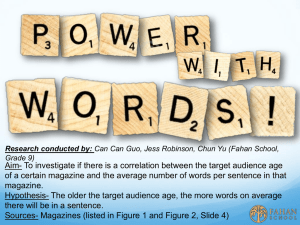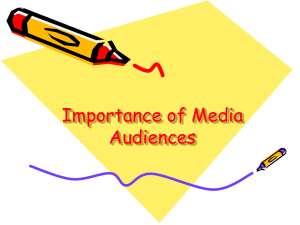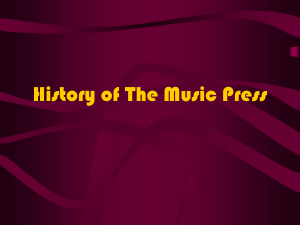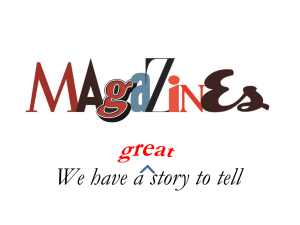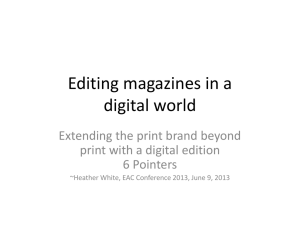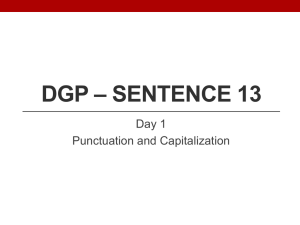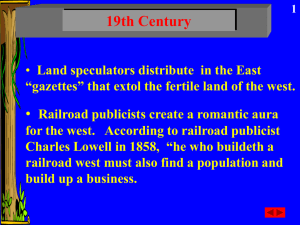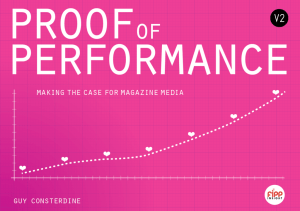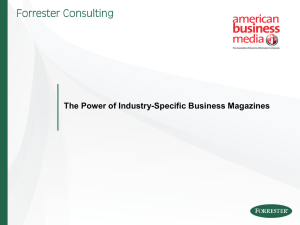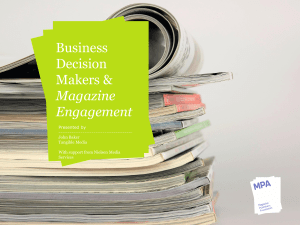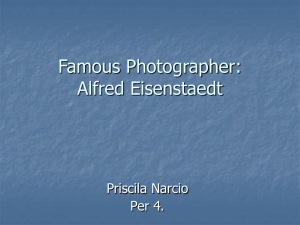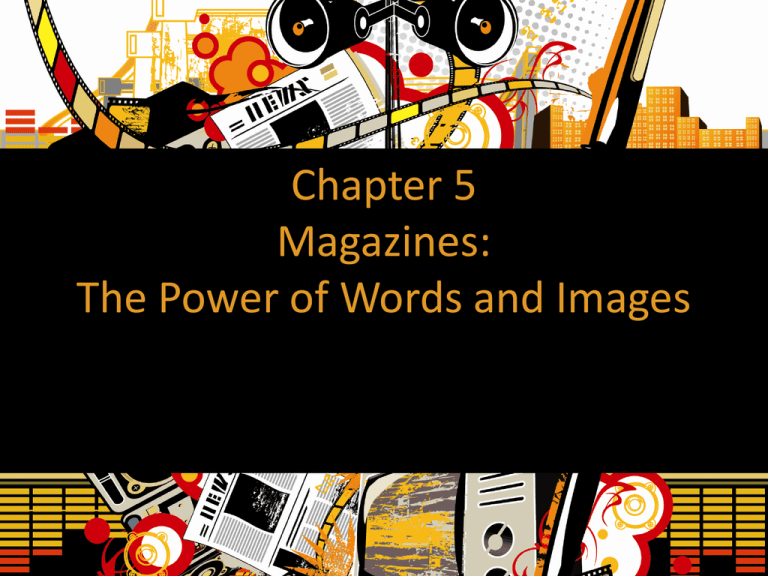
Chapter 5
Magazines:
The Power of Words and Images
Early Magazines
• What is a magazine?
A publication of lasting interest targeted at a
specific audience. A collection of articles.
• 1704: Daniel Defoe founds The Review.
Commonly considered the first magazine.
• 1740: Competition between Ben Franklin and
Andrew Bradford to launch first American
magazine. Bradford wins by three days.
The Saturday Evening Post
• First published in 1821
• Contained essays, poetry, obituaries, and a
column called “The Ladies’ Friend”
• First truly national medium
• Post remained important until the coming of
television
Birth of Photojournalism
• Photographer Mathew Brady first became
famous for portraits, Civil War photography
team.
• By 1864, Harper’s Weekly was reproducing his
team’s photos.
• Promoted idea that photographs could be
published documents preserving history.
Types of Magazines
• Consumer magazines
Publications targeting an audience of likeminded consumers
• Trade magazines
Magazines published for people who work in
an industry or business
• Literary magazines
Publications that focus on serious essays and
short fiction
Literary and Commentary
Magazines
• Atlantic, New Republic, Nation
Serious publications with progressive
orientation published since the 1800s.
• National Review
Conservative response to New Republic and
Nation by William F. Buckley.
• Crisis
Published by NAACP to give voice to African
Americans.
The Muckrakers
• Progressive investigative journalists writing in
the late 1800s, early 1900s
• McClure’s
Popular reform-oriented muckraking magazine
featuring work by Lincoln Steffens and Ida
Tarbell.
Henry Luce & Birth of Time Life
• Luce developed idea of Time magazine in early
1920s to present the week’s news in context.
• Followed by Fortune covering business
• Life magazine presented the news through
photos, featured work of Margaret BourkeWhite.
Godey’s Lady’s Book
• Sarah Josepha Hale was editor from 1837 to
1877
• Defined what women’s magazines would
become
• Gave women a voice, professionalized
magazine writing
Women’s Magazines
• Service magazines
“Seven Sisters” and others, how to do things
better. Health, cooking, employment, fashion
• FBL – Fashion, beauty, lifestyle
Vogue, Glamour, Harper’s Bazaar
• Cosmopolitan
Global magazine for young women, focus on
unmarried women
Men’s Magazines
• 1933: Esquire
Literature, pinups, and fashion for an
intelligent readership.
• 1953: Playboy
Pictures and a lifestyle. First issue featured a
nude Marilyn Monroe centerfold.
• 1993: Maxim
“Lad” magazine featuring sex, sports, and
humor. Meeting the needs of the “inner guy.”
Magazines and Body Image
• Critics charge that magazines and ads present
excessively thin models.
• Dove reacted in 2005 with “Campaign for Real
Beauty” featuring models of a variety of sizes.
• Magazines now occasionally featuring
“realistic-looking” women in photos.
• Controversy over the “Photoshopping” of a
Kelly Clarkson cover for Self.
Advertising vs. Editorial Control
• Conflict between advertising and editorial
departments.
• Synergy
Magazines, models, and sponsors work
together to match ads with stories about
models and the products they endorse.
• Blurring of ads and editorial content
Ads can be made to look like magazine
content.
Dick Stolley’s Cover Rules
•
•
•
•
•
•
Young is better than old
Pretty is better than ugly
Rich is better than poor
Music is better than movies
Movies are better than television
Nothing is better than a dead celebrity
Covers and Race
• American magazines rarely feature non-whites
on cover.
• In 2002, less than 20 percent of magazine
covers featured people of color.
• As of 2009, Sports Illustrated swimsuit issue
has featured only two women of color on the
cover.
• But may be changing; teen music magazines
often have non-whites on covers.
Current Trends
in Magazine Publishing
• Targeting narrower audiences.
• Presentation matters; layout and graphics
critical.
• Articles are short; busy readers with short
attention spans.
• Cross-media synergy; using magazines to
support other channels of communication.

